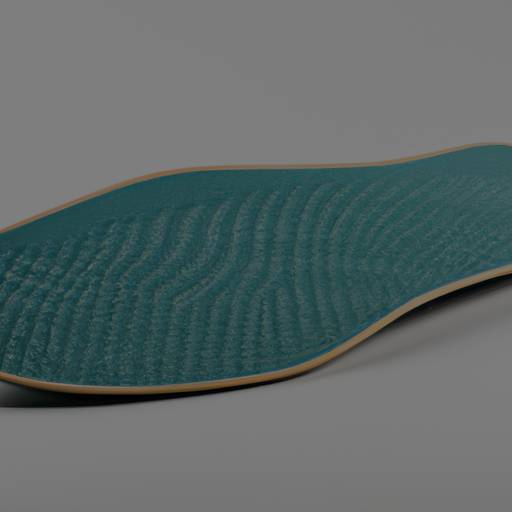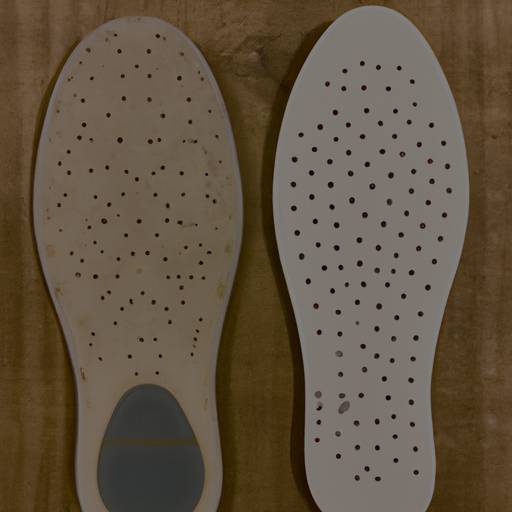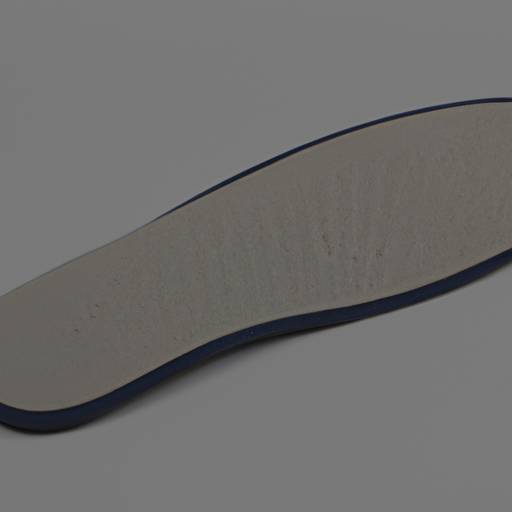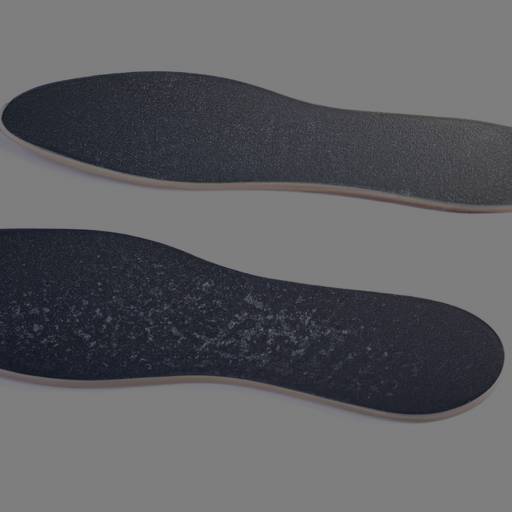Discover the Top Insoles for High Arches: A Comfortable Solution!
Understanding High Arches
High arches, also known as cavus foot, are a common foot condition characterized by an exaggerated arch shape. This condition occurs when the arch of the foot is higher than normal, causing the majority of body weight to be distributed on the balls of the feet and the heel. Understanding the characteristics and challenges associated with high arches is crucial in finding the right solutions for comfort and support.
What are High Arches?
High arches refer to an abnormally high curvature of the arches of the feet. This condition can be inherited or develop over time due to various factors such as neurological disorders, muscle imbalances, or foot injuries. Individuals with high arches often have a distinct arch shape, with a noticeable gap between the foot and the ground when standing. The arch appears higher and tighter, resulting in less contact with the ground during walking or running.
Challenges of High Arches
Having high arches can present a range of challenges and discomfort. The lack of proper weight distribution due to the limited contact area with the ground can lead to instability and balance issues. People with high arches may be more prone to ankle sprains, as the foot is less able to absorb shock and adapt to uneven surfaces. The excess pressure on the balls of the feet and the heel can cause pain, calluses, and even stress fractures over time.
Importance of Arch Support
Arch support plays a vital role in addressing the challenges associated with high arches. Proper arch support helps distribute the weight evenly across the foot, reducing the excessive pressure on specific areas. It helps realign the foot, promoting better posture and balance. Arch support also aids in shock absorption, cushioning the impact of each step and reducing strain on the joints.
Wearing insoles specifically designed for high arches can provide the necessary support and alleviate discomfort. Insoles with adequate arch support help maintain the foot’s natural position, reducing excessive pronation (inward rolling of the foot) and supination (outward rolling of the foot). This helps prevent common problems associated with high arches, such as plantar fasciitis and shin splints.
By understanding the nature of high arches and the challenges they present, individuals can prioritize finding the right solutions for support and comfort. Insoles with proper arch support are an effective tool to help alleviate discomfort and promote proper foot alignment. For more information on finding the best high arch support insoles, check out our article on best arch support insoles.
Benefits of Insoles for High Arches
For individuals with high arches, using insoles specifically designed to provide arch support can offer a range of benefits. These insoles are designed to address the unique challenges posed by high arches, helping to alleviate discomfort and improve overall foot health. Let’s explore the key benefits of using insoles for high arches:
Correcting Foot Alignment
High arches can often lead to an imbalance in foot alignment, causing pressure to be concentrated on certain areas of the foot. This can result in foot pain, instability, and even contribute to issues like plantar fasciitis. Insoles with arch support help to correct foot alignment by providing the necessary support to the arches. By evenly distributing pressure across the foot, these insoles can help alleviate pain and promote proper foot alignment.
Reducing Discomfort and Pain
Individuals with high arches often experience discomfort and pain due to the lack of natural shock absorption in the arch area. Insoles with arch support are designed to cushion the arches and provide shock absorption, reducing the impact on the feet during daily activities. By reducing the strain on the arches and absorbing shock, these insoles can help alleviate pain and provide much-needed comfort.
Improving Balance and Stability
High arches can sometimes affect balance and stability, making it more challenging to walk or engage in physical activities. Insoles with arch support help to provide stability by properly supporting the arches and promoting a more natural foot position. This can enhance balance and reduce the risk of ankle sprains or other injuries caused by instability.
By using insoles with arch support, individuals with high arches can experience improved foot alignment, reduced discomfort and pain, and enhanced balance and stability. Remember to choose insoles that are specifically designed for high arches to ensure optimal support.
Types of Insoles for High Arches
When it comes to finding the right insoles for high arches, there are several options available. Each type of insole offers unique features and benefits that cater to the needs of individuals with high arches. Let’s explore three common types: memory foam insoles, gel insoles, and orthotic insoles.
Memory Foam Insoles
Memory foam insoles are designed to provide exceptional cushioning and support for high arches. The memory foam material conforms to the shape of your feet, offering customized comfort and relieving pressure on the arches. These insoles help distribute weight evenly, reducing discomfort and preventing excessive strain on the arches.
Additionally, memory foam insoles absorb shock and impact, providing enhanced shock absorption during walking or running. The soft and plush feel of the memory foam makes them particularly comfortable for all-day wear. For more information on memory foam insoles, check out our article on memory foam insoles.
Gel Insoles
Gel insoles are another popular choice for individuals with high arches. These insoles are made from a soft gel material that offers excellent cushioning and shock absorption. The gel material conforms to the shape of your feet, providing targeted support to the arches and reducing pressure points.
Gel insoles also help to improve stability and balance by providing a supportive platform for your feet. The gel material has a cooling effect, which can be soothing and refreshing for those with tired or achy feet. For more information on gel insoles, check out our article on gel insoles.
Orthotic Insoles
Orthotic insoles are specifically designed to address foot imbalances and provide proper arch support. These insoles are often recommended by healthcare professionals for individuals with high arches or other foot conditions. Orthotic insoles are typically made from rigid materials such as plastic or carbon fiber, offering firm support and stability.
The rigid arch support of orthotic insoles helps to align the foot properly, reducing overpronation and providing relief for the arches. While they may require some time to get used to, orthotic insoles can significantly improve foot function and alleviate discomfort caused by high arches. For more information on orthotic insoles, check out our article on orthotic insoles.
When selecting insoles for high arches, it’s important to consider factors such as arch support, cushioning, and material durability. It’s also crucial to choose insoles that are compatible with the type of shoes you wear. By finding the right insoles for your high arches, you can improve your overall comfort and support while reducing pain and discomfort. Remember to consult with a healthcare professional if you have any specific concerns or questions regarding your high arches and insole selection.
Factors to Consider
When selecting insoles for high arches, there are several important factors to consider. These factors can help ensure that the insoles provide the necessary arch support and cushioning, are made from the right material and are durable, and are compatible with a variety of shoe types.
Arch Support and Cushioning
One of the key considerations when choosing insoles for high arches is the level of arch support and cushioning they provide. Insoles designed specifically for high arches should have a contoured shape that helps support the natural arch of the foot. This support helps distribute pressure evenly across the foot and reduces strain on the arch.
In addition to arch support, cushioning is also essential for providing comfort and shock absorption. Look for insoles with adequate cushioning to help reduce discomfort and impact during walking or other activities. Memory foam insoles, for example, are known for their excellent cushioning properties. Check out our article on memory foam insoles to learn more about their benefits.
Material and Durability
The material of the insoles plays a significant role in their overall comfort and durability. Look for insoles made from high-quality materials that can withstand regular use. Common materials used in insoles include foam, gel, and orthotic materials.
Foam insoles, such as memory foam or cushioned foam, provide excellent comfort and mold to the shape of the foot, offering personalized support. Gel insoles are known for their shock-absorbing properties, providing cushioning and reducing foot fatigue. Orthotic insoles, made from rigid or semi-rigid materials, offer more structured support and stability. Each material has its own benefits, so it’s important to choose the one that suits your needs and preferences.
Shoe Compatibility
Consider the types of shoes you typically wear when selecting insoles for high arches. Insoles should fit comfortably inside your shoes and not alter their fit or cause discomfort. Look for insoles that are designed to be compatible with various shoe types, including athletic shoes, casual shoes, and even dress shoes.
Some insoles may be trimmable or available in different sizes to ensure a proper fit. It’s important to follow the manufacturer’s guidelines or consult a professional if you are unsure about the sizing or trimming process. Choosing insoles that fit well in your shoes will help provide the right support and comfort while maintaining the integrity of the shoe structure.
By considering these factors—arch support and cushioning, material and durability, and shoe compatibility—you can make an informed decision when selecting insoles for high arches. Remember that insoles are not a one-size-fits-all solution, so it may be helpful to try different options to find the one that works best for you.
Tips for Choosing and Using Insoles
When it comes to finding the right insoles for your high arches, there are a few important considerations to keep in mind. Here are some key tips to help you choose and use your insoles effectively:
Proper Sizing and Fit
To ensure maximum comfort and support, it’s crucial to select insoles that are the right size for your shoes. Most insoles come in a range of sizes, so be sure to consult the manufacturer’s sizing guide before making a purchase. It’s important to note that insoles should generally be trimmed to fit your specific shoe size. A properly fitting insole will provide optimal arch support and help alleviate discomfort.
Gradual Adaptation to Insoles
If you’re new to using insoles, it’s important to give your feet some time to adjust. Start by wearing the insoles for short periods, gradually increasing the duration each day. This allows your feet to acclimate to the support provided by the insoles. It’s normal to experience some initial discomfort during the adjustment period, but if you continue to experience persistent pain or discomfort, it may be worth consulting a healthcare professional.
Regular Maintenance and Replacement
Insoles, like any other footwear accessory, require regular maintenance to ensure their effectiveness and longevity. Keep your insoles clean by gently washing them with mild soap and water. Allow them to air dry completely before placing them back in your shoes. Additionally, it’s important to monitor the condition of your insoles and replace them as needed. Over time, insoles may lose their cushioning and support, so it’s important to replace them when they show signs of wear and tear.
By following these tips, you can ensure that your insoles provide the necessary support and comfort for your high arches. Remember to prioritize proper sizing and fit, gradually adapt to wearing insoles, and maintain them regularly to extend their lifespan. For more information on insoles and their benefits, check out our article on best arch support insoles.








One Comment